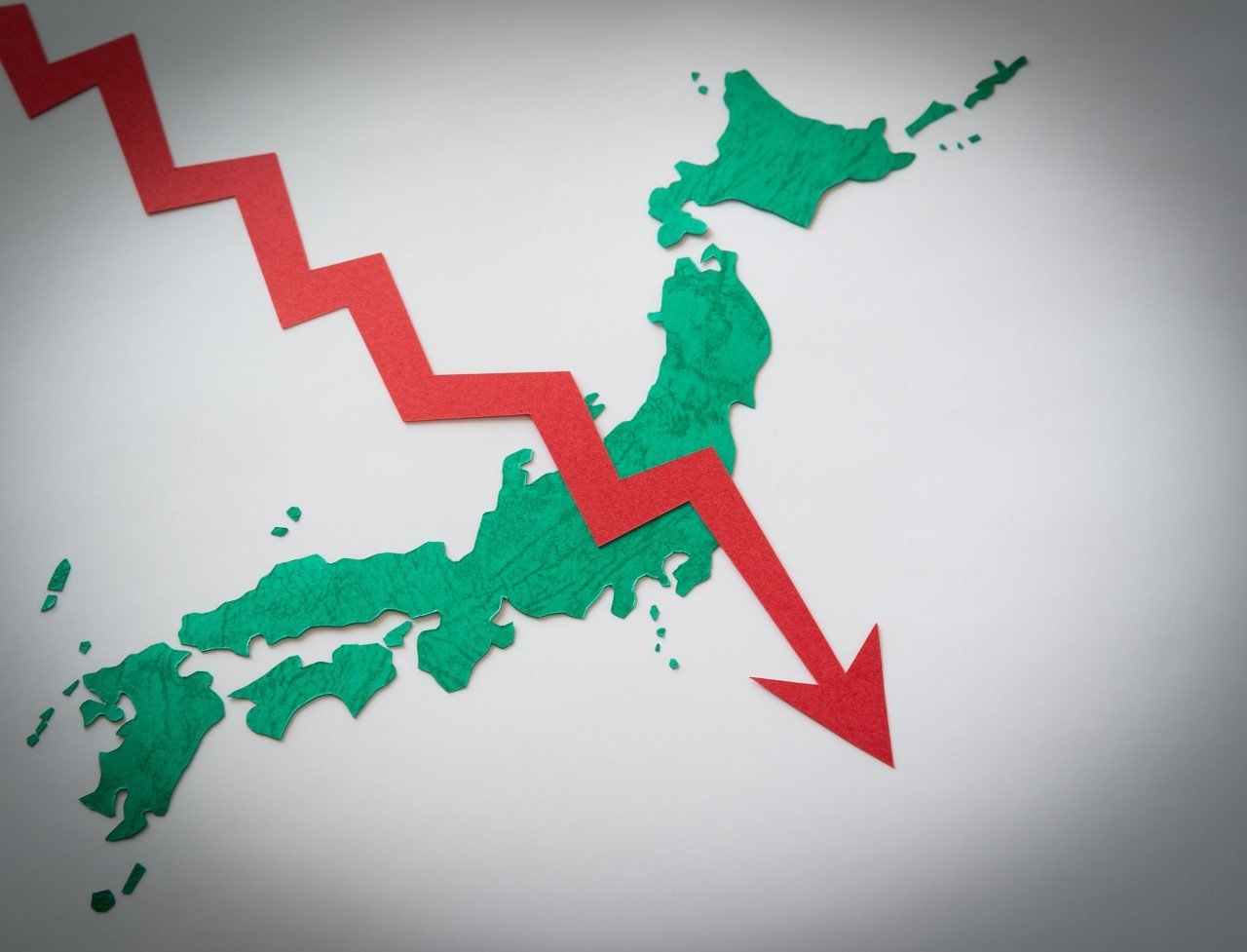2015/11/18
Nobutoshi Kitaura, "The Stagnation of the Global Economy and Distortions in the Financial and Capital Markets"
[PDF version] (The article appeared originally in Japanese in IIPS Quarterly, dated July 17, 2015).
Since the collapse of the bubble in the early 1990s, the Japanese economy has been in a continuous zero-or-lower-than-zero inflation state and has lost monetary policy effectiveness at mitigating economic shocks. As a result, Japan's economic structure has otherwise become vulnerable and Japan is easily affected by trends in the global economy to which Japan exports. Based on analyses from international institutions and others, this paper reports the risks currently being accumulated in the global economy surrounding the Japanese economy.
1. The stagnation of the global economy and the decline of equilibrium real interest rates
In April 2015, in a World Economic Outlook (WEO) report, the IMF WEO (2015, 1) predicted that global growth rate in 2015 and 2016 would be around 3.5% and 3.8%, respectively. This is at about the same level as the average global growth rate over the past 35 years and is by no means low. However, it is about one percentage point lower than the growth of around 4.5% observed in the first half of the 2000s, which was underpinned by favorable economic conditions in China and in commodity exporters.
Summers (2014), a former US treasury secretary, points to the decline in growth potential among the advanced economies by using the concept of "secular stagnation." Similarly, Wolf (2015), a columnist for The Financial Times, argues that many countries are experiencing a balance sheet recession. Summers warns that the economic stagnation that economies around the world are currently experiencing could continue over the long term, based on considerations of both supply side (shrinking populations, decreasing growth in the rate of technological advancement, declining costs of capital, decreasing unit amount in IT investment and venture investment, and the like) and demand side (reversal from excess borrowing in the past housing bubble and changes in the distribution of income, among other factors). Meanwhile, Wolf notes that, despite the fact that balance sheets matter, most economies around the world are dependent on debt, with many countries' debt-to-GDP ratios increasing by more than 20%-50% from 2007 to 2014. Thus, Wolf argues the possibility that the global economic growth will be substantially lower and that many countries will likely respond to excessive debt with some mixture of financial repression, monetization, inflation and debt restructuring. As though in summary of these arguments, the IMF WEO (2015, 2) analyzes the potential growth rates in various countries for 2015 to 2020 and notes that both developed countries and emerging market economies (EMs) have declined in terms of growth potential, compared with the first half of the 2000s. In specific terms, according to the IMF, the developed countries have slowed from a rate of 2.25% before the crisis (that is, from 2001 to 2007) to 1.6% over the next five years, and the EMs have gone down from 6.5% to 5.2%, comparing the same two periods. The slowdown among the developed countries is due to the continuing aftereffects of the crisis, growing constraints on labor markets because of declining birth rates and aging populations, and moderating growth in productivity and investment. In the EMs, in addition to declining birth rates and slowdowns in investment, other major factors behind lower growth include a deceleration of the catch-up growth that these countries had been enjoying under their existing growth models.
Summers (2014), the IMF WEO (2014, 2), and others argue that countries with fiscal space (the US, Germany, etc.) should do more to encourage growth by undertaking debt-financed infrastructure investment. However, there are various problems with proceeding with strategies of public investment, including: (1) There are concerns about a future worsening of fiscal conditions associated with the aging societies in many developed countries, as exemplified by the notable worsening of the US fiscal balance in 2014 due to health care reform; (2) both the US and German economies are near their full-employment states, and so the effects on the economy of fiscal outlays would likely be limited; and (3) even if governments increase infrastructure investments, then infrastructure projects should be implemented programmatically rather than as economic measures, after giving due consideration to what the appropriate priorities should be. Thus, the global economy seems to be in a situation in which there is no option but for most countries to proceed with deleveraging and structural reforms while relying on monetary policy as a short-term economic control valve.
On the other hand, the stagnation of the global economy (reduced investment and growing excess savings), coupled with long-lasting monetary easing following the global financial crisis, has lowered nominal short-term in advanced economies to zero or below zero and has narrowed the scope for monetary policy. In the US, with the expected inflation anchored at around 1.5%, the nominal and real long-term interest rates would be around 2% and 0.5%, respectively, and nominal and real short-term interest rates would be about 0% and -1.5%, respectively. In Europe and Japan, nominal interest rates also are trending at historically low levels.
Concerning the outlook for real interest rates in the near future, the IMF WEO (2014, 1) analyzes worldwide real long-term interest rate trends over the past 30 years and presented that since the 1980s the average ten-year global real interest rates declined from a high of 6% in 1983 to about 2% in the mid-2000s and to approximately zero in 2012. The IMF argues that, because it is unlikely that the factors lowering real interest rate (substantially higher saving rates in EMs, an increased demand for safe assets and a sharp decline in investment in advanced economies) could be reversed easily, real yields for 10-year US Treasury bonds will trend at low levels (a maximum of around 2%) for the next five years or so. Hamilton, et al. (2015) analyze the equilibrium real interest rate (the so-called natural interest rate) that would balance the economy and report, among other findings: (1) The current equilibrium level of the real federal funds rate is likely to be somewhere between a little over 0% and pre-crisis consensus of 2%; (2) the current world equilibrium rate is estimated to be 0.5%; (3) the authors forecast that the current US real federal funds rate of -1.5% will increase, gradually approaching the current world equilibrium rate level (0.5%); and (4) the outlook for future equilibrium real rate is highly uncertain.
2. Distortions in the financial and capital markets and the possibility of market disruption
As described in the previous section, the recent lack of demand (excess savings) in the global economy is likely to continue, and, although the US real federal funds rate will rise moderately as the US economy recovers, the rate will likely trend at historically low levels for the time being.
Meanwhile, IMF and Bank of International Settlements (BIS) reports frequently note that excess risk taking has occurred in the financial and capital markets. In particular, as US 10-year US Treasury bonds trend at low nominal yield levels of around 2%, pension funds, insurance firms, and other institutional investors that have promised high long-term rates of return to their investors are operating by pursuing high returns through increasing the amount of their investments in high-yield and emerging-market bonds through exchange-traded funds, hedge funds, and other parts of the so-called shadow banking sector (below, referred to collectively as "shadow banking").
The IMF GFSR (2014) argues that such increases in risk taking have given rise to distortions in the prices of financial assets and yields. Specifically, the IMF reports that 10-year US Treasury bond term premiums and B-rated corporate bond spreads have both diverged from historical levels by narrowing, each by 100 basis points. The document also reports that historical levels suggest that US stock prices may have been overvalued since 2012 and that this is mainly due to lower risk premiums. It is anticipated that these distortions will eventually normalize, but the IMF maintains that normalization of sovereign debt term premiums and corporate bond spreads would, by itself, result in a loss of around 8% of the $45 trillion global bond market--$3.8 trillion, or nearly the same as Japanese national income.
The report also argues that because of stricter oversight of banks, the major fund management actors in the financial and capital markets have shifted from commercial and investment banks to shadow banking. This has weakened the role of the market makers that would be expected to provide market liquidity during market disruptions. This decline in the liquidity of the market is increasing vulnerabilities in a possible market disruption when investors, such as exchange-traded fund traders, rush to sell their assets by responding economic shocks.
Economic shocks that could cause chaos in the financial and capital markets include the FRB raising interest rates and a "hard landing" for the Chinese economy. There has been, in particular, much discussion since last autumn of debt problems in the emerging markets, occasioned by falls in the prices of crude oil and other resources. Emerging-market bonds denominated in hard currency--which barely existed until 10 years ago--have reached a level of about $2.6 trillion. This, along with international bank loans in emerging markets of nearly the same amount, is thought to represent the excessive risk taking by investors from developed countries and the vulnerability of the financial and capital markets. Inherent to emerging-market debt are problems of currency mismatches; if the borrower's sources of income are in local currency, as is the common case for the real estate and construction sector, then a progressive appreciation of the dollar will increase the amount that must be repaid on dollar-denominated loans, thus making repayment more difficult. Each individual economic shock itself that has been noted in this section could be dealt with. However, there is a risk that economic turmoil could spread internationally via the financial and capital markets.
3. How not to increase risks
Thus the long-term monetary easing and excessive risk taking that have resulted from the stagnation of the global economy have now caused distortions in the financial and capital markets, which will soon require careful handling by policy makers in each country. There have been calls on central banks (in particular, the US FRB) to continue their cautious communications with the market, and authorities overseeing financial institutions have been renewing their macro-prudential policies (supervision of shadow banking, stress tests of banks and so forth).
Furthermore, from his standpoint as a macroeconomist, the author of this paper believes that what is crucial is to provide appropriate information, including warnings, to make investors sufficiently aware of the particular risks that they are taking. As the IMF WEO (2014, 1) and Hamilton et al. (2015) point out, in the current conditions of economic stagnation and excess savings, the world equilibrium rate and real long-term sovereign debt yields will likely remain low for the time being. Meanwhile, the negative real US real federal funds rate, expected inflation rates, term premiums, debt spreads, and stock risk premiums will all eventually normalize (or, be forced to correct). A certain degree of market disturbance during this process is unavoidable. However, if economists offer appropriate analytical findings based on the fundamentals, and if investors are capable of possessing more certain knowledge of their own risk-taking situations, then, even if various economic shocks manifest, it should be possible to moderate somewhat the dumping or other behaviors in which large numbers of investors might engage.
Of course, ultimately it is the market that decides prices. However, market participants, in general, tend to behave excessively. Economists--including those in governments, central banks, international institutions, think tanks, and the media--have major roles to play debating economic fundamentals and sounding the warning bells when required. Especially, Japan has continued to suffer long-term deflation, and many market participants have lost their judgment concerning the prices and yields of financial assets. Just as their US counterparts have done, the Bank of Japan and other relevant parties in the market should play more active roles by presenting medium-term outlooks on inflations and yields of bench-mark rates, as well as by providing long-term evaluations based on the fundamentals.
References
IMF GFSR (2014), Global Financial Stability Report, IMF, October 2014.
IMF WEO (2015, 1), "Chapter 1, Recent Developments and Prospects," IMF World Economic Outlook, April 2015.
IMF WEO (2015, 2), "Chapter 3, Where Are We Headed? Perspectives on Potential Output," IMF World Economic Outlook, April 2015.
IMF WEO (2014, 1), "Chapter 3, Perspectives on Global Real Interest Rates," IMF World Economic Outlook, April 2014.
IMF WEO (2014, 2), "Chapter 3, Is It Time for an Infrastructure Push? The Macroeconomic Effects of Public Investment," IMF World Economic Outlook, October 2014.
Hamilton, D. James, Ethan S. Harris, Jan Hatzius, and Kenneth D. West (2015), "The Equilibrium Real Funds Rate: Past, Present and Future," March 1 2015.
Summers L. (2014), "U.S. Economic Prospects: Secular Stagnation, Hysteresis, and the Zero Lower Bound," Business Economics Vol. 49, No. 2.
Wolf, Martin (2015), "How addiction to debt come to even to China?," the Financial Times, 25th February 2015.






